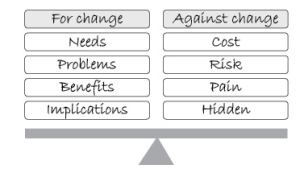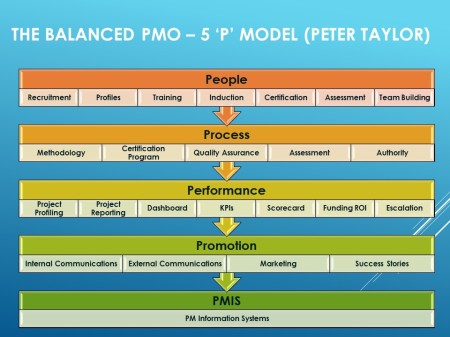There is an old software company joke about how to have simpler and more successful projects.
We all know that to get real buy-in for a new system of any sort you absolutely need to engage your end-users, the last in line that will actual use the technology. End-User involvement was the cry that went up all the time in pre-project engagements and scoping exercises. What did middle management really know about what was needed and what was a good or bad system? And don’t get me started on the executive level and their remoteness from reality of the business. Get me end-users and lots of them!
But as soon as you involved end-users life got complicated; they were a critical and demanding bunch, and time and effort grew exponentially according to the breadth and depth of end-user involvement.

And so the dark humour was that to ensure a faster sell and a quicker delivery get rid of the ‘hyphen’ – end-user involvement needed to become ‘end user involvement’ i.e. don’t involve them at all!
OK so that may have made you smile wistfully but the truth is that not involving end users is a recipe for eventual disaster.
Resistance to new systems (change) is as a result of three elements I believe.
- User – Fear/Exposure
- User – Experience/Simplicity
- User – Profit/Gain/Extras
Having been involved in many system implementations over the years you do need to tick all three boxes to get the smoothest of transitions to the new way of doing things and the fastest acceptance of this change.
Starting with the middle point the new system has to be ‘better’ than the existing one – easier to use – friendlier – acceptable. Get that right and it is a good platform for change acceptance but there is more.
The fear factor rates high on everyone’s agenda, we generally like the status quo and dislike change – even if we spend hours complaining about the inefficiencies and frustrations of the status quo!
A new system worries us because it might expose some weakness in our working methods, some old workarounds that aren’t good practice but ‘Hey, they get the job done right?’
This new-fangled all singing all dancing application is going to shine a light on things we would rather keep in the dark and well hidden from our peers and our managers.
This fear has to be considered and managed.
And finally why should we do all of this change, even if the fear is dealt with and the new system operates like a dream, if there is actually no personal gain. The call for change ‘for the greater benefit of the organisation as a whole’ means absolutely nothing if the result is that I have to work twice as hard to make that benefit a reality. What’s in it for me?
Change
It is important to understand the balance of change if you indeed want to succeed in such changes.
Without reaching some sort of ‘escape velocity’ you (or your end-users) will never do anything different. What we are talking here about reaching the point of conscious decision to help others or yourself make a personal change.
Look at it this way.
Change can be described as C(urrent), that is where you are now, and D(esire), where you want to be and B(enefit), which is the resultant reward for whatever change is undertaken.
For example:
Effect: My house feels crowded and noisy, and on top of that I have nowhere to put things… And this is making life less pleasant!
This can be described as: My current house is too small (C), I would like a bigger house (D), the benefit of having a bigger house would be more room for me and my family (B). E(ffects) are also important because they will force a change.

Now you may be in a number of states as far as change is concerned:

- You may lack any insight to your problems or need to change
- You may have insight but need a solution or plan
- You may have a plan but need some assistance in making it happen
For example:
- Lack of insight – Why does my house seem so crowded and noisy, with nowhere to put things?
- Insight but no plan – My house is too small what shall I do?
- Insight and plan – My house is too small, I need to move, how will I do this?
Against change
To move anyone towards change there is a balancing act that needs to be performed. There are a number of resistances that stop change taking place, or at least allow people to put up personal arguments against changing (these might be those small voices in your head that you hear from time to time):
- Cost – Everything has a perceived cost whether this is actual money that would need to be invested or just your time and effort (and distraction from other matters)
- Risk – A concern over what such change would bring about should it in some way fail and require recovery, the work to be redone or loss of face. Concern about the risk of failure and what that would mean to you and others
- Pain – Recognition that change usually means some form of pain that needs to be endured, the negative aspects of the process of change itself
- Hidden – It is often possible to uncover the first three points but there will often remain ‘hidden’ reasons that someone is resistant to such change.
This makes it hard to assess the ‘balance’ of resistance since while it may be possible to quantify and address the ‘cost’, ‘risk’ and ‘pain’ elements the ‘hidden’ ones remain hidden and therefore unquantifiable.

For change
The Formula For Change was created by Richard Beckhard and David Gleicher, refined by Kathie Dannemiller[1] and is sometimes called Gleicher’s Formula 3.
This formula (D x V x F x CL > R) provides a model for assessing the relative strengths affecting the likely success or otherwise of organisational change programmes.
Three factors must be present for meaningful organisational change to take place. These factors are:
- D = Dissatisfaction with how things are now
- V = Vision of what is possible
- F = First, concrete steps that can be taken towards the vision
- CL = Creative Leadership to navigate towards the vision
If the product of these four factors is greater than
then change is possible. Because D, V, and F are multiplied, if any one of them is absent or low, then the product will be low and therefore not capable of overcoming the resistance.
And for your end-users the resistance is:
- User – Fear/Exposure
- User – Experience/Simplicity
- User – Profit/Gain/Extras
To ensure a successful change it is necessary to use influence and strategic thinking in order to create vision and identify those crucial, early steps towards it. In addition, the organisation must recognise and accept the dissatisfaction that exists by communicating industry trends, leadership ideas, best practice and competitive analysis to identify the necessity for change.
And you have to make sure that you don’t end user involvement but you value end-user involvement because they will make it a success.
Peter Taylor
‘Progress isn’t made by early risers, it is made by lazy men trying to find easier ways to do something’
Peter Taylor is the author of two best-selling books on ‘Productive Laziness’ – ‘The Lazy Winner’ and ‘The Lazy Project Manager’.
In the last 4 years he has focused on writing and lecturing with over 200 presentations around the world in over 20 countries and has been described as ‘perhaps the most entertaining and inspiring speaker in the project management world today’. He also acts as an independent consultant working with some of the major organizations in the world coaching executive sponsors, PMO leaders and project managers.
His mission is to teach as many people as possible that it is achievable to ‘work smarter and not harder’ and to still gain success in the battle of the work/life balance.
More information can be found at www.thelazyprojectmanager.com and www.peterbtaylor.co.uk – and through his free podcasts in iTunes.
Book him for:
- Keynote Presentations and Lectures
- Master of Ceremonies/Event Host
- Inspirational Workshops
- Training
- Coaching
- Authoring
[1] The original formula, as created by Gleicher and authored by Beckhard and Harris, is: C = (ABD) > X where C is change, A is the status quo dissatisfaction, B is a desired clear state, D is practical steps to the desired state, and X is the cost of the change. It was Kathleen Dannemiller who dusted off the formula and simplified it, making it more accessible for consultants and managers.






